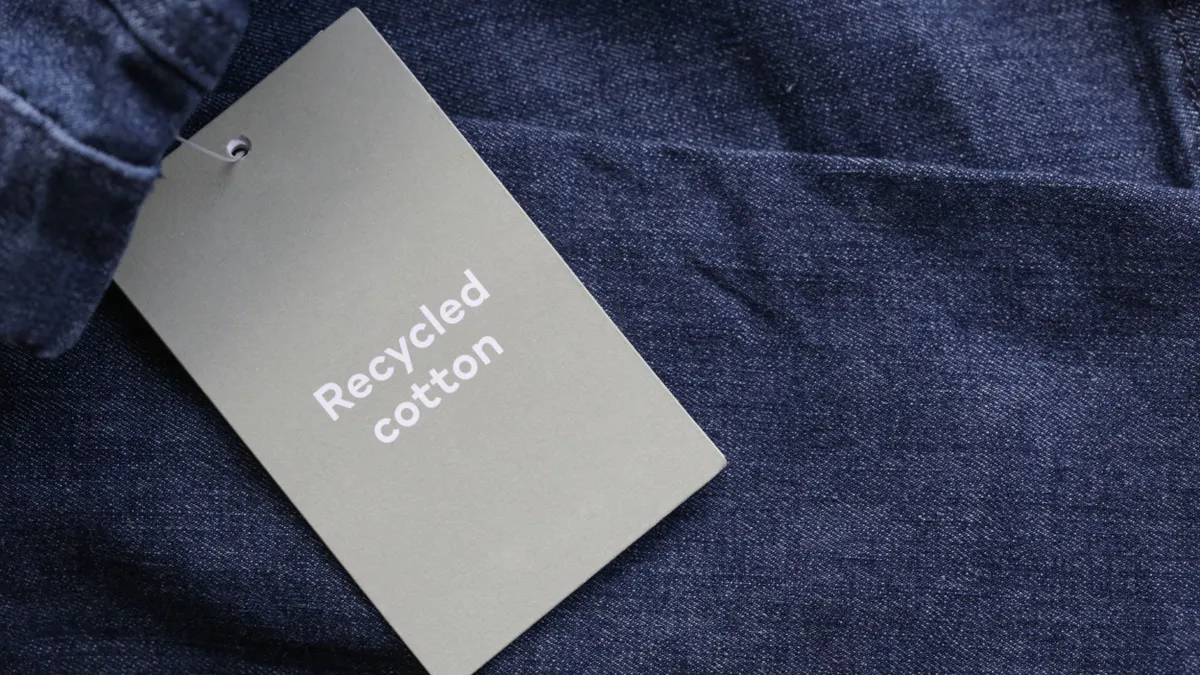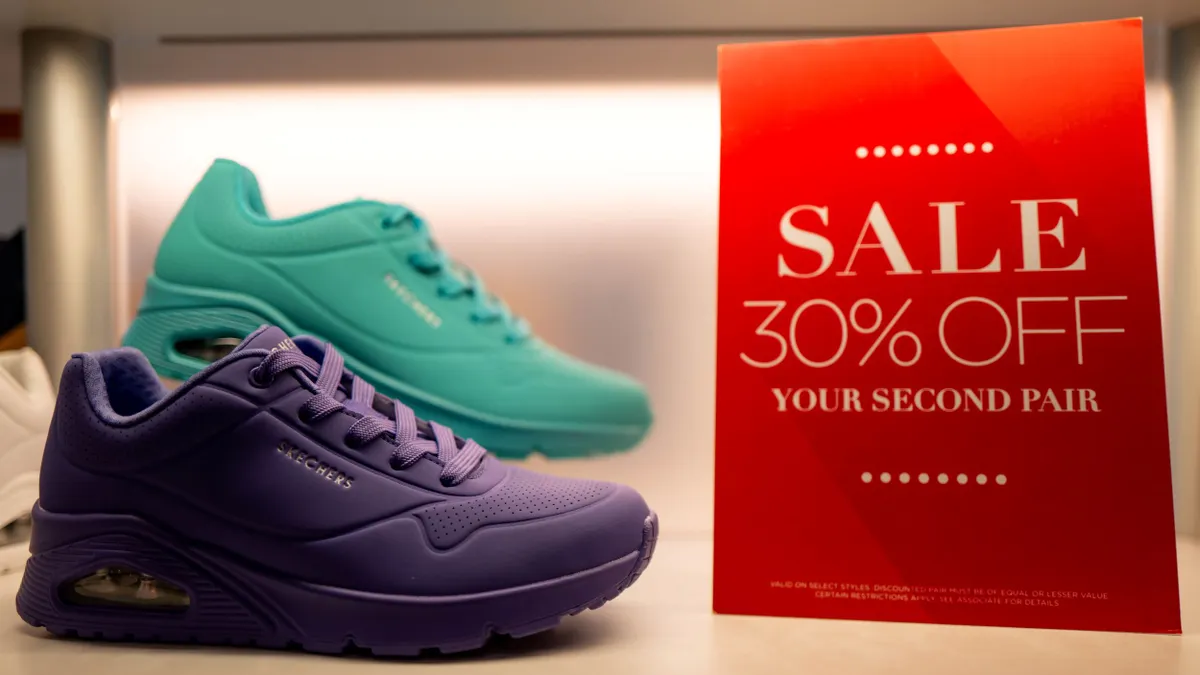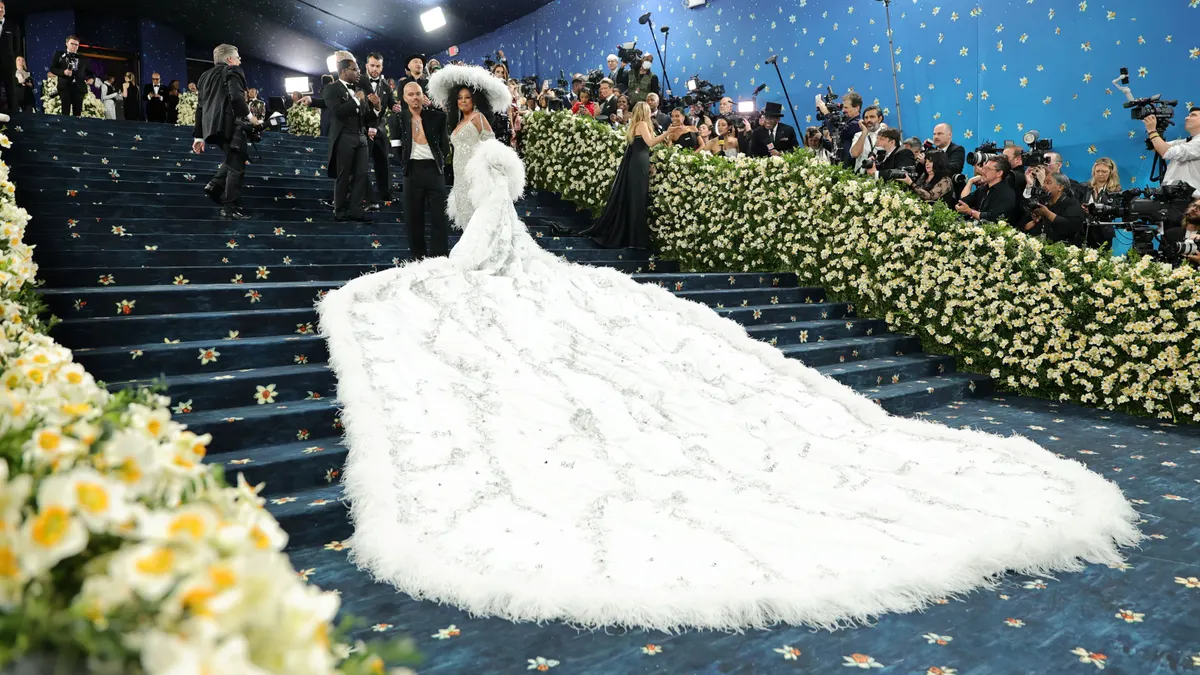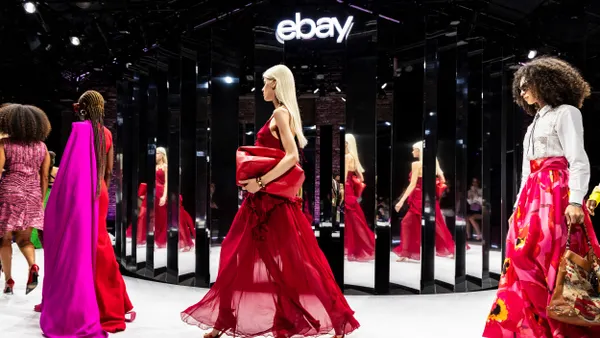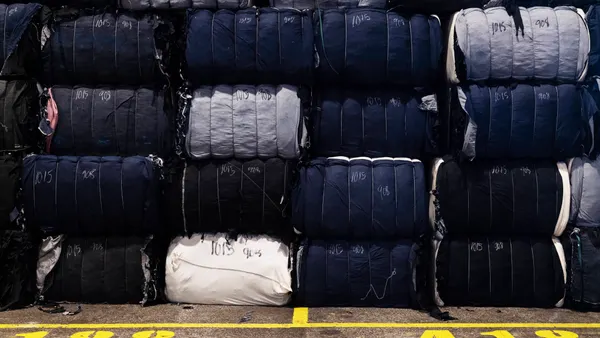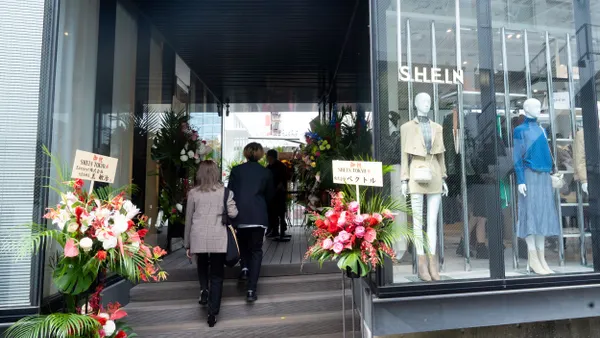Dive Brief:
- Circularity in fashion has made improvements over the past few years, but year-over-year progress is slowing, according to the 2025 Circular Fashion Index from Kearney.
- The annual report, now in its fifth year, analyzed 246 brands in 18 countries and five categories: fashion, footwear, sports, outdoor and underwear and lingerie.
- Brands were ranked based on both the primary and secondary markets for circular fashion.
Dive Insight:
Kearney defines the primary market as embracing circularity in design principles, brand communication, accessible care instructions and the availability of repair and maintenance services. Secondary market levers included secondhand sales, rental services and “closing the loop services,” such as pre- and post-consumer waste management.
Based on this criteria, more than 70% of brands scored “moderate” for their circularity efforts, which Kearney said indicates that circularity has become mainstream. However, Kearney said only 3% to 5% of brands reached the higher “extensive” tier when it came to implementing circular practices. The report added that the “leap from moderate engagement to scaled circularity” remained rare.
While brands have made commitments to circularity, few have translated intent into “consistent, scaled execution,” Kearney said.
Take back programs, capsule collections and scrap repurposing are more common than circular design principles like raw material reuse, but they are rarely embedded into full product lines across geographies, per Kearney.
The report credited companies including Nike, Gant, Adidas, Gucci and The North Face for breaking this pattern over the last few years. Athleticwear brand On began integrating lifecycle assessment data into its product development, per the report.
Progress is the slowest in the resale, repair and rental categories. Sixty-five percent of brands scored “limited” on repair, while 70% received the same designation on resale.
Scalability, system integration, a clear business case and operational readiness are the key factors holding brands back from more circular adoption, Kearney said.
Patagonia, Gucci, Levi’s, Arc’teryx and The North Face are among the top circular brands on a list that also includes Lululemon, Coach, Gant, OVS and Decathlon. This list remains mostly unchanged for the third year in a row, per Kearney.
By category, underwear and lingerie saw the strongest increase in score for circularity, followed by luxury fashion. The latter showed circular momentum in design, communication and raw material use.
Premium fashion, sports and outdoor made the strongest category design gains for circularity, while fast fashion is advancing in design and communication but is challenged by systemic constraints, per the report.
“Today, most brands find themselves stuck between ambition and execution, progressing, but not fully transforming,” the report stated. “Most of the low-hanging fruit has been picked: basic circularity initiatives, awareness campaigns, capsule collections, or localized take-back programs. But the transition from piloting to full-scale execution often lags.”
Most of the companies researched had their circularity efforts siloed in sustainability departments rather than being embedded in product development, sourcing, supply chain and commercial operations, Nora Kleinewillinghoefer, co-author of the report and partner at Kearney, said in the release.
“While our top-ranking companies continue to pull ahead, the majority of brands find themselves stuck between ambition and execution, making progress in some facets, but not transforming themselves across all dimensions in an integrated way,” Kleinewillinghoefer said.



